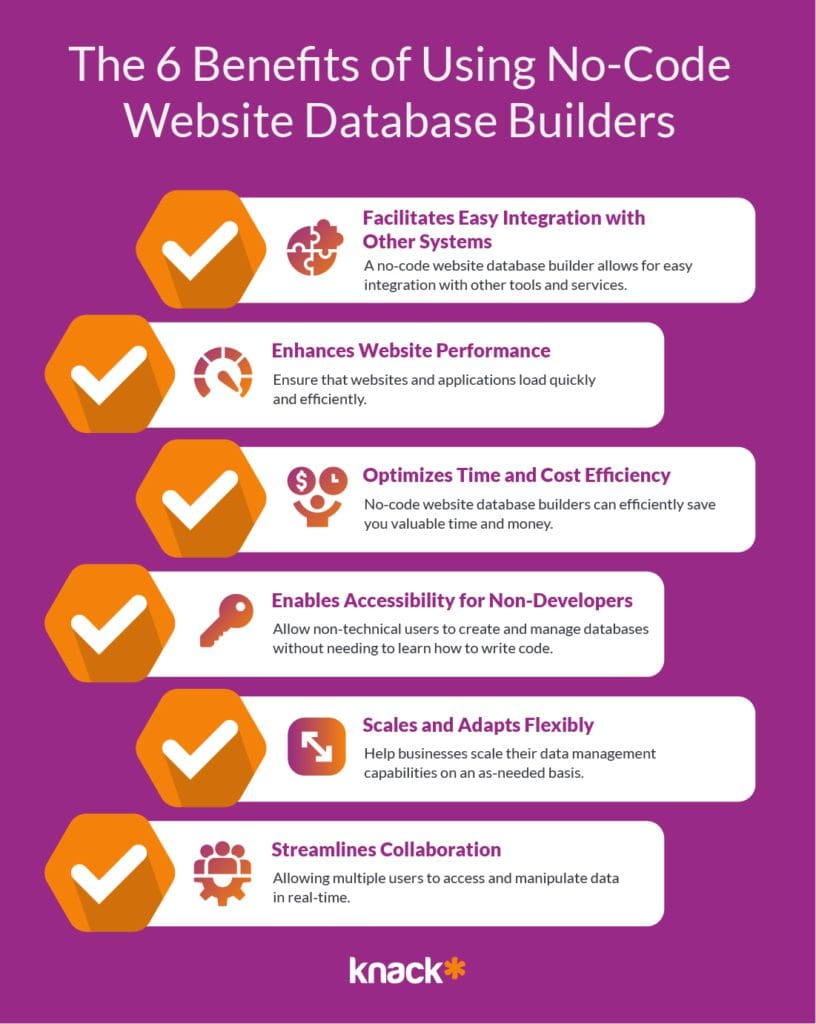Enhance Open Platform Data Source Development with No-Code Growth Platforms
A Comprehensive Overview to Implementing Scalable Data Sources Without the Requirement for Coding Know-how
In the modern landscape of data management, the capacity to apply scalable databases without coding knowledge is ending up being increasingly crucial for companies of all dimensions. This guide intends to illuminate the process, concentrating on straightforward devices and intuitive interfaces that demystify database arrangement. By examining essential attributes, effective techniques for implementation, and ideal techniques for continuous management, we will certainly resolve how even non-technical individuals can confidently navigate this complex terrain. What are the critical elements that can absolutely equip these individuals to utilize scalable data sources properly? The answers might redefine your strategy to data management.
Understanding Scalable Data Sources
In the realm of modern data administration, scalable data sources have become a vital remedy for organizations seeking to handle raising volumes of information successfully. These databases are made to suit development by permitting for the smooth enhancement of sources, whether via horizontal scaling (including a lot more machines) or vertical scaling (updating existing devices) This flexibility is necessary in today's hectic digital landscape, where data is generated at an unprecedented price.
Scalable data sources usually use dispersed styles, which make it possible for information to be spread throughout numerous nodes. This circulation not only boosts performance yet likewise supplies redundancy, making certain information availability also in the occasion of hardware failures. Scalability can be an essential aspect for various applications, including shopping platforms, social media networks, and huge data analytics, where individual need can rise and fall dramatically.
In addition, scalable data sources usually include durable information consistency models that balance performance and integrity. Organizations must consider their certain requirements, such as read and create speeds, data honesty, and mistake resistance when picking a scalable database option. Eventually, understanding the underlying principles of scalable databases is vital for organizations intending to grow in a progressively data-driven globe.
Secret Functions to Seek
When evaluating scalable data sources, a number of crucial features are critical to making certain ideal efficiency and dependability. Think about the style of the data source. A dispersed design can improve scalability by allowing information to be stored throughout numerous nodes, promoting smooth data gain access to and handling as need increases.
One more essential attribute is information dividing, which enables efficient administration of big datasets by dividing them into smaller, extra workable pieces (no-code). This method not only enhances efficiency but additionally simplifies source allotment
Furthermore, look for robust duplication capacities. This function makes sure information redundancy and high availability, decreasing downtime throughout upkeep or unanticipated failures.
Efficiency tracking devices are additionally necessary, as they offer real-time insights right into system health and functional efficiency, permitting for timely modifications to keep optimum efficiency.

User-Friendly Database Equipment
Simpleness is a critical element in the layout of user-friendly database tools, as it boosts accessibility for customers with varying degrees of technological know-how. no-code. These devices prioritize user-friendly interfaces, allowing customers to create, handle, and query databases without calling for comprehensive programs understanding
Secret features typically include drag-and-drop capability, visual data modeling, and pre-built themes that improve the arrangement process. Such devices frequently supply directed tutorials or onboarding processes that facilitate individual involvement and decrease the knowing curve. more In addition, seamless combination with popular information resources and solutions makes sure that customers can conveniently import and export information, better streamlining operations.

Furthermore, durable support and area sources, such as discussion forums and documents, enhance the user experience by giving help when needed. Generally, user-friendly database tools equip organizations to go to my site harness the power of scalable data sources, making data administration obtainable to every person entailed.
Step-by-Step Execution Overview
Just how can organizations successfully implement scalable data sources to meet their growing information demands? The procedure begins with identifying particular data needs, including the volume, selection, and speed of information that will certainly be processed. Next, companies need to review user-friendly data source devices that use scalability functions, such as cloud-based options or handled data source solutions.
When the appropriate device is selected, the next action includes configuring the database setting. This consists of establishing instances, specifying user permissions, and developing information frameworks that align with company goals. Organizations must after that migrate existing information into the new system, making certain information stability and marginal disruption to operations.
Post-migration, performing detailed testing is critical; this includes performance testing under numerous lots conditions to make certain the system can deal with future growth - no-code. In addition, it is essential to train staff on the data source management user interface to help with seamless use
Best Practices for Administration
Efficient monitoring of scalable data sources requires a critical method that focuses on ongoing tracking and optimization. To achieve this, organizations should apply robust tracking tools that provide real-time understandings right into database performance metrics, such as query response times, resource use, and deal throughput. Frequently examining these metrics can aid determine traffic useful link jams and locations for renovation.

Regular back-ups and disaster recovery strategies are crucial to guard information honesty and availability. Establishing a routine for checking these backups will guarantee a dependable recovery process in case of an unexpected failure.
Additionally, performance tuning need to be a constant procedure. Adjusting indexing techniques, optimizing inquiries, and scaling resourcesâEUR" whether vertically or horizontallyâEUR" will certainly help maintain optimal efficiency as usage needs advance.
Lastly, cultivating a society of expertise sharing amongst employee will certainly make it possible for continuous understanding and adjustment, guaranteeing that the administration of scalable data sources remains efficient and reliable gradually.
Final Thought
To conclude, the implementation of scalable databases can be successfully accomplished without coding competence with the application of straightforward tools and instinctive user interfaces. By adhering to the outlined approaches for setup, data movement, and performance testing, individuals can navigate the complexities of database monitoring effortlessly. Stressing ideal techniques for recurring maintenance and partnership more improves the capacity to manage scalable data sources efficiently in a rapidly advancing data-driven environment.
In the contemporary landscape of information management, the ability to implement scalable databases without coding competence is coming to be increasingly crucial for companies of all dimensions.In the realm of contemporary information management, scalable databases have arised as a critical service for organizations looking for to manage enhancing quantities of information efficiently.Additionally, scalable data sources typically feature robust information consistency models that stabilize performance and reliability.Just how can companies effectively implement scalable databases to fulfill their growing data demands? Next, companies should examine easy to use data source tools that use scalability features, such as cloud-based solutions or managed data source solutions.